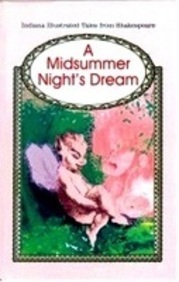
Special Features: Cahners Business Information (c) 2001 Gr 3-6-These prose adaptations attempt to make the Bard's work accessible to a young audience. They are serviceable, if uninspired, renditions that convey the overall plotlines. While the major pieces of each story are all here, this Cliff's Notes approach leads one to realize how flat the plays are when the poetry is missing. For instance, when the witches meet Macbeth, the simple yet powerful greeting of "Hail, Thane," is replaced with the prosaic "Good evening, Lord of Glamis." In so doing, the power and true spirit of the text are lost, and, with them, the opportunity to introduce young readers to a more interesting level of speech. The characters are all here, but because of the brevity and formulaic nature of the writing, there is little opportunity for their development; consequently some figures are merely introduced with no background information, and the relationships between the personages are unclear. The watercolor illustrations, a balance of black and white and color, vary from small insets to full-page paintings, appropriately sporting cartoon figures for Midsummer and a more realistic style for Hamlet. At times there is little distinction between some of the figures, but the drawings are clear and elucidate the plots. Geared to a younger and less-sophisticated audience than either Marchette Chute's Stories from Shakespeare (World, 1956; o.p.) or Charles and Mary Lamb's classic Tales from Shakespeare (Puffin, 1995), these titles-particularly Midsummer-can serve as basic introductions to the playwright's work. However, libraries would be wiser to purchase individual titles, such as Bruce Coville's William Shakespeare's Romeo and Juliet (Dial, 1999), a modern-day retelling that still retains the flavor of Shakespeare's poetic genius.-Nancy Menaldi-Scanlan, LaSalle Academy, Providence, RI?

